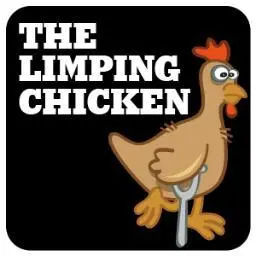
ContactSCOTLAND-BSL, Scotland’s nationally funded online British Sign Language/English interpreting video relay service (VRS), delivered by Sign Language Interactions on behalf of the Scottish Government, has announced that the service can now be accessed by people who are deafblind and use British Sign Language (BSL).
You can watch a service user using the service here.
Deaf BSL users have been using contactSCOTLAND-BSL to contact any of the 140+ public bodies or any of the 1,000’s of Scotland’s third sector organisations by calling through a mobile device such as a smartphone, tablet device or desktop computer, signing via the camera to the online BSL/English interpreter who in turn calls (phones) the public body or third sector organisation and relays the call between the two parties.
Deafblind people have been unable to access this ground-breaking and at times life changing service due to the simple fact that they cannot see the interpreter on screen.
Now with advances in technology and software, deafblind people whose first language is BSL, can now access the video relay service by signing to the online interpreter using BSL and rather than seeing the signed response, they receive the responses via a braille display attached to the computer with responses being typed by the online interpreter. This is a first for Scotland and a first in the UK.
Mental Health Minister Clare Haughey said:
“This service is a breakthrough in helping deaf and now deafblind people, who rely on British Sign Language, to live as independently as possible and retain a level of privacy, no longer having to rely on family and friends to make calls for them. The Scottish Government has provided more than £1 million over the past three years to deliver this initiative, and with calls to contactSCOTLAND-BSL rising by almost a quarter over the past year, I’m sure this latest technology will result in even more people using this service.”
Debra Wherrett – Deafblind BSL User (the first ever user!) said:
“At the time when technology advanced with video I missed this opportunity because of my sight loss, a real missed opportunity which was really disappointing. I always thought I wouldn’t have the chance to use video relay. Now I have that opportunity!
Never say ‘impossible’, there is always possibilities, I thought I wouldn’t have this chance. Thank you.”
Andrew Dewey, Director, Sign Language Interactions said:
“Advances in video technology has meant that deafblind people have been excluded from benefiting from services that many people take for granted. Now, deafblind BSL users can have access to all of Scotland’s public bodies and third sector organisations and make phone calls where previously they had to rely on others to make them. Calls can be from the mundane such as ordering food for their guide dog (albeit pretty important to the dog!) to contacting council services or making appointments at their GP surgery whenever they need to. The key is being able to express themselves in their language of choice – BSL.
We are extremely honoured to be delivering this truly ground breaking and potentially life changing service on behalf of the Scottish Government, and are grateful to everybody who has made this amazing advancement possible”





















Ben Fletcher (@bjfletcher)
September 4, 2018
The “signers” in “Deafblind signers” in the title is misleading. This is for deafblind people who a) understand written English, b) understand Braille, two difficult skills that many deafblind people don’t have.
I have a degree in Computer Science, I work as a Principal Engineer, and I really struggle to read individual letters in Braille, let alone full words. Many others have struggled too.
I believe this service is for a minority, rather than majority, of the whole deafblind population. It is very important that all stakeholders & policymakers understand this is for only a minority of the deafblind population.
I’d look to the US, where they have VRSs that send interpreters to be onsite with the deafblind clients, providing hands-on interpreting. This is what we need.
pennybsl
September 4, 2018
Ben’s reply is significant because it highlights a need to label the users of this service as ‘DeafBlind Braille user’